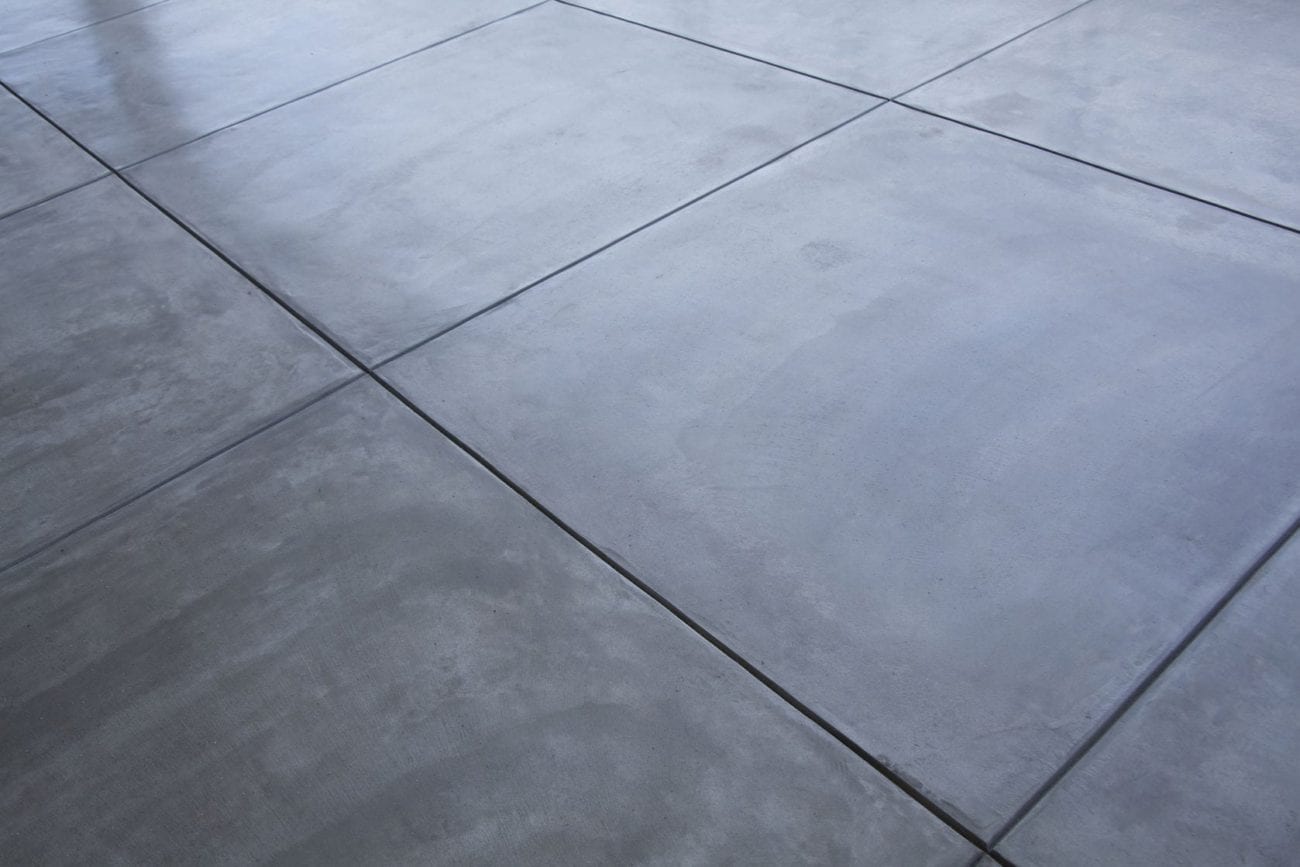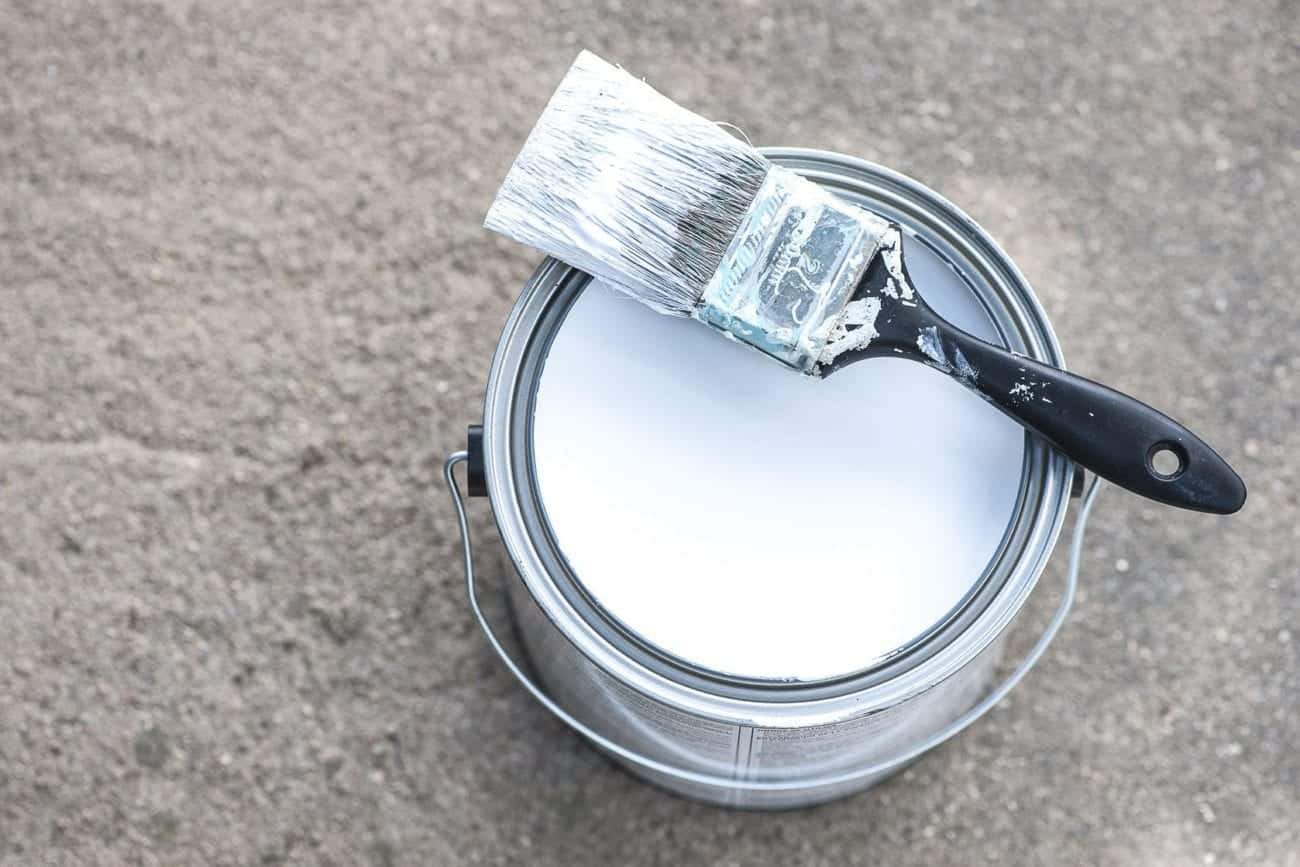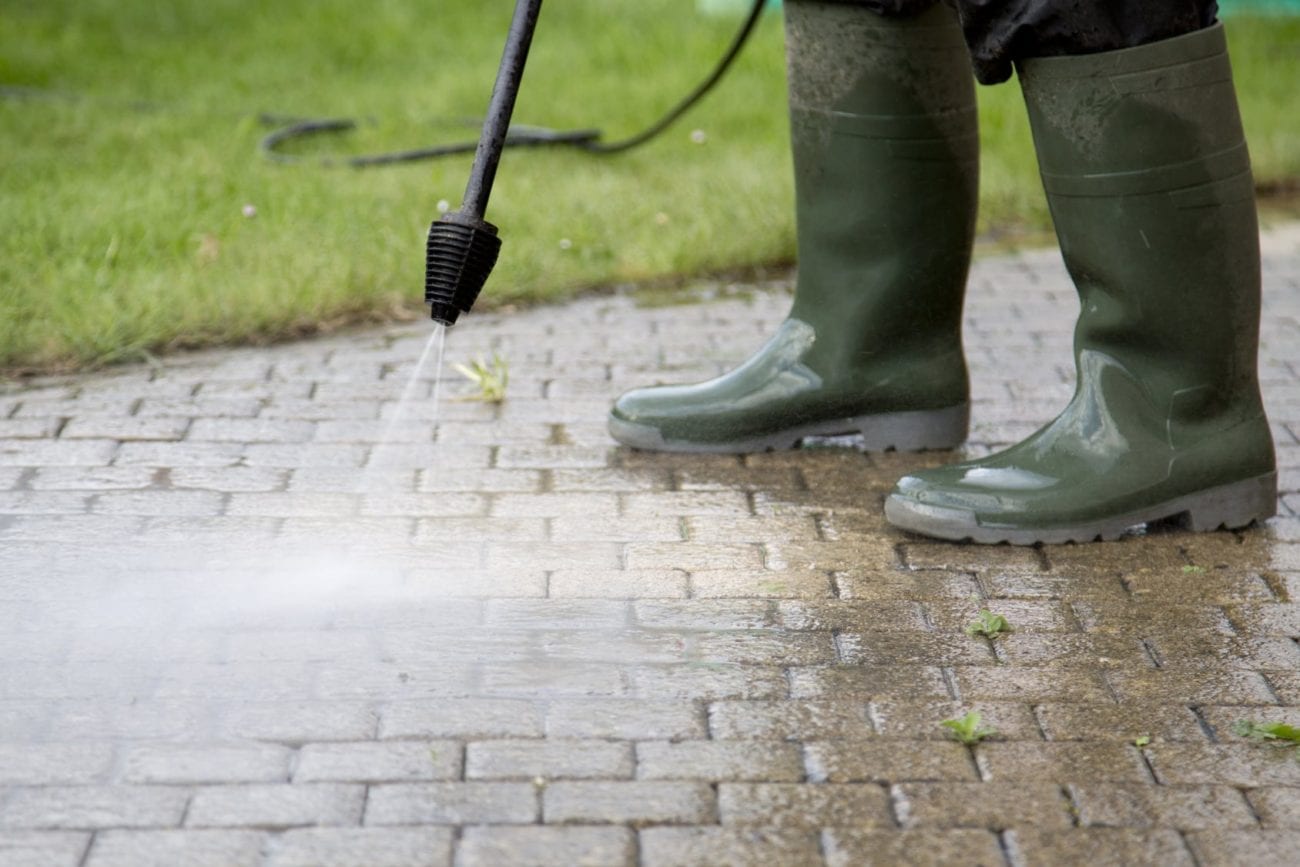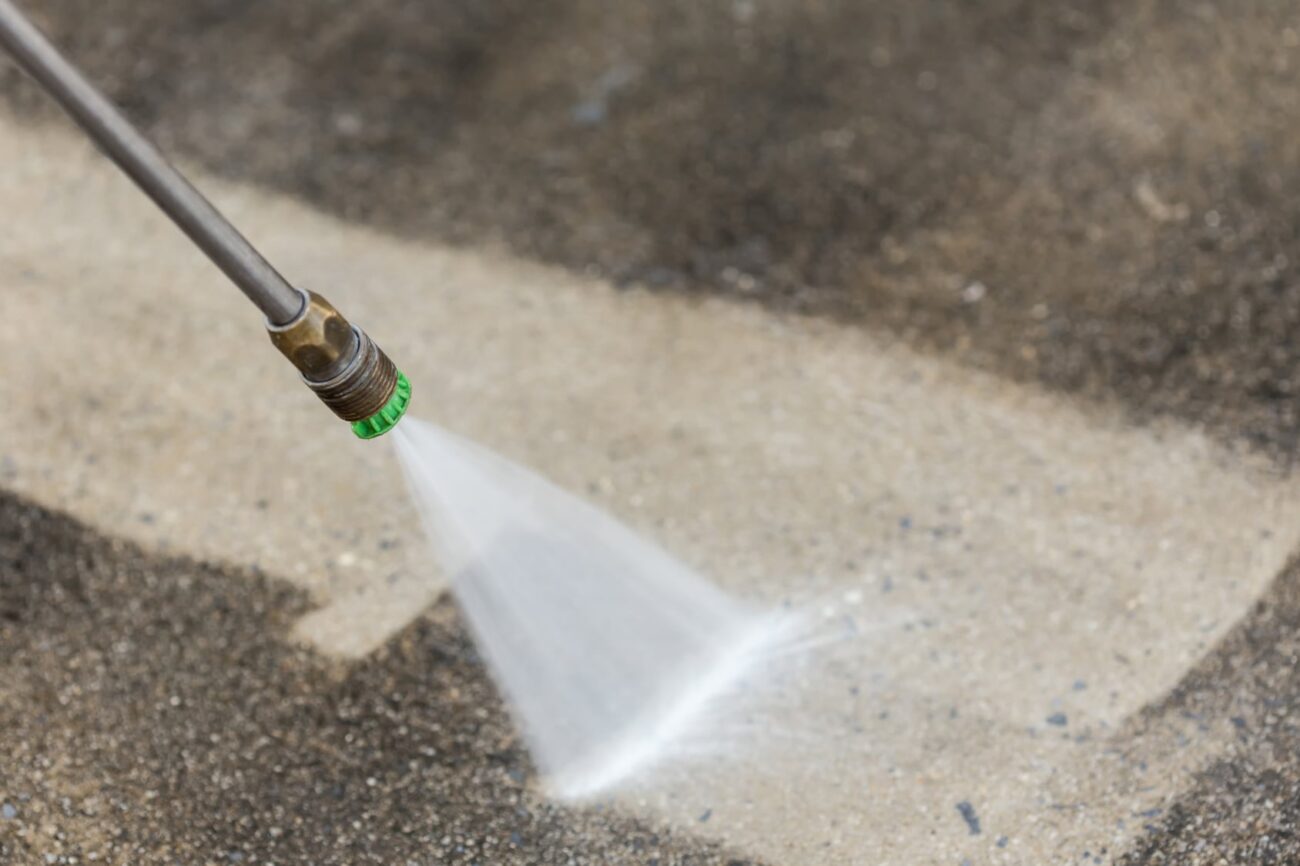Dry-Lock is a company typically found in local and retail hardware stores across the country. Given the nature of the market for concrete sealer, Dry-Lock can be the only option for purchase in one of the big-box chains, like Lowes or Home Depot. However, that does not necessarily mean it is the best, or even the most cost effective, option.
The Dry-Lock Masonry Waterproofer has a lot in common with the Behr Masonry Waterproofer. It is a ready-mixed, low odor formula that protects against water while allowing moisture to pass through the concrete naturally. It is easily applied with a brush and a roller (like pretty much all concrete sealers), and it has a low VOC content.
However, the Dry-Lock Masonry Waterproofer is a latex-based paint-type of surface protection. It isn’t even as strong as Behr’s offering, which is an acrylic solution. Dry-Lock, despite its claims, could potentially flake and bubble, even leading to efflorescence. Efflorescence, which Dry-Lock cannot guarantee to prevent and remove completely, is a situation that occurs when salts within the concrete are pushed to the surface by water that leaks in through the opposite side. The condition is not functionally damaging, but it harms the visual appeal of the concrete surfaces, which bothers many homeowners.
Basements are the parts of our homes most vulnerable to damage from the elements. This damage frequently manifests itself in such problems as flooding, the excessive build-up of mold and/or mildew, and the passage of potentially harmful gases through the basement walls into your home. As the walls are typically just made of concrete rather than being insulated properly, your home is open to these sorts of problems.
The best way to deal with these problems, of course, is to prevent them. Virtually all basements are constructed from concrete. Concrete, while incredibly strong, is also an extremely porous material. Beginning on its surface, concrete is filled with tiny pores and hairline cracks that extend throughout the material. While concrete is strong enough without any further treatment, it is not as strong and protective as it can be.
Enter concrete sealers. Concrete sealers are products designed and manufactured to help protect the concrete surfaces of your homes. For a basement, the best option would be a penetrating concrete sealer. Sealers of this variety are applied to the surface of the concrete. Once applied, their small particles of protective sealant seep into the concrete through the tiny surface pores, continuing their passage via the pathways of pores and hairline cracks that are natural to concrete. However, once the sealant passes through these miniscule openings, the chemicals react with chemicals present within the concrete, permanently filling up the holes and cracks.
This process not only protects your concrete from the passage of water or harmful gases into your home, but it also fundamentally strengthens the concrete. The concrete becomes denser, filled with more particles of calcium silicate hydrate (or CSH), a naturally occurring part of concrete with which the concrete sealer reacts chemically to increase. The best way to prevent damage to your concrete basement is to treat it early on with a quality penetrating concrete sealer.
Our Take: We like this penetrating concrete waterproofer found at HomeDepot.com.
Concrete has long been recognized as a sort of wonder material. From the ancient Egyptians to the ancient Romans, concrete has been a staple in building and construction for thousands of years. Throughout that period of time, concrete has gone through many transformations, evolving and changing with every new technological and chemical advancement. One of the most recent advancements was the discovery and development of a new, self-healing flexible concrete by researchers at the University of Michigan.
Traditional concrete is often beset with wide, gaping cracks that threaten and destroy the material’s structural integrity. Wear, abrasion, and the elements all play a role in concrete’s destruction, and the image of the rundown, cracked sidewalk with weeds growing through are fairly commonplace. However, the new concrete material is designed to avoid these gaping cracks, and even can be fixed and repaired without any human effort.
The new concrete works by bending with the pressure caused by such problems as freeze/thaw cycles. Instead of being so rigid as to crack in a large, gaping manner, the concrete will crack much more subtly throughout the material. This is a natural benefit because the concrete is also designed to heal itself. With exposure to water and carbon dioxide, the concrete can actually mend its own cracks without any human interference. Instead of spending time and money on various attempted fixes for your cracked concrete, you will now only have to wait for the next rainstorm for your concrete to heal itself.
The new concrete substance bends rather than cracks, which preserves its structural integrity enabling it to heal itself without recourse to heavy machinery and human labor. In fact, the concrete has been shown to repair itself back to its original level of strength with only a few drizzly days. The biggest current negative to the use of the material is its unsurprising price tag. The new concrete can cost up to three times more than traditional concrete, which ensures manufacturers of concrete sealer will remain in business despite the new advancements. While self-healing concrete is an incredible discovery, it hardly is a cost-effective alternative to construction professionals and homeowners who just want to protect their concrete.
Maybe ten years ago, nobody paid as much attention to the environment. Products were produced with only performative aspects and results in mind. There were not as many federal and state regulations on products, especially concrete sealers. Similarly, there was not a widespread understanding of the dangers of certain chemical and industrial products. For instance, worker would toil for hours in closed-quarters areas full of asbestos, a practice which only stopped less than a decade ago when the cancer-causing properties of asbestos were discovered.
While the chemicals in concrete sealers are not as bad as those found in asbestos and other known cancer-causing agents (as far as we know now), they certainly are not good for one’s health. The increasing realization of their harmfulness has led to a revolution in the industry. This revolution began with the understanding of the dangers of volatile organic compounds, or VOCs.
VOCs are carbon-based compounds released from solvent-based concrete sealers. Technically speaking, they have a high vapor pressure that is released into the air from chemical-based products, like paints or concrete sealers, due to their low boiling points. Once in the air, they are absorbed into the environment, leading to a gradual build-up of harm. They also, however, can be absorbed by humans and animals in their vicinity, leading to a myriad of potential health risks ranging from allergic reactions to cancer, depending on the particular volatile organic compound and its level of release.
Federal law restricts the VOCs normally found in concrete sealers to be under 600 grams/liter. While this does not preclude the use of solvent-based sealers, it has led to manufacturers to begin producing water-based concrete sealers that offer the same level of comprehensive protection as their solvent-based counterparts. Even more recently, states in the Northeast including New York, Pennsylvania, Maryland, the District of Columbia, Virginia, New Jersey, and Delaware restricted the use of concrete sealers if their VOC content was over 400 grams/liter, further throttling the solvent-based sealers. Parts of California have the strictest regulations of all, requiring all sealers to have a VOC content of lower that 100 grams/liter, effectively prohibiting the use of solvent-based sealers.
While these prohibitions are rendering one of the primary concrete sealing staples obsolete, they are also encouraging research and development into new products. Manufacturers have begun to produce concrete sealing offerings that are water-based, thereby complying with all VOC regulations, all while giving concrete a competitive level of protection. In the years to come, these products will increasingly become stronger and more competitive until solvent-based sealers likely become a thing of the past.
Concrete lasts for an incredibly long period of time, especially when it is properly treated soon after it has been mixed, poured, and cured. Protected by a concrete sealer, concrete can withstand the elements, freeze/thaw cycles, UV damage, abrasions, water damage, and the myriad forms of wear that accumulate over time. However, concrete sealers do not last indefinitely unless you have opted to use a penetrating sealer. As these sealers actually strengthen the concrete by changing its chemical make-up, penetrating sealers do not need to be reapplied.
Surface sealers, on the other hand, need periodic reapplication, though that will depend on your particular concrete project. Some, like epoxies, will last longer than others, like acrylics; water-based sealers will typically not last as long as solvent-based offerings. Before you can reapply a sealer, however, it is important that remove all the last vestiges of the old sealer in order to ensure maximum protection from the new application. As surface sealers bond to the surface of the concrete, the presence of old sealer can impede that adhesion process.
The easiest way to remove a concrete sealer is to begin by acid etching the surface of the concrete with muriatic acid. This process can be dangerous if you are unfamiliar with it; however, it is well within the ability of any ordinary homeowner, as long as the proper care is taken. To acid etch, you must first dilute the acid, which minimizes its potential danger. Then you must spray the concrete surface with the acid, scrubbing vigorously. Next, you have to neutralize the acid before washing down the concrete surface for a final time.
The acid etching process will remove the old concrete sealer completely from the concrete slab. In its place will stand a fresh slab of concrete ready for a new application of concrete sealer. Once the concrete has been acid etched, you need to let the slab dry completely before applying the new sealer. If the slab is wet, or if there is any sort of debris obstructing the surface, the new coat of sealer will not bond as well as it should, leaving your concrete open to potential problems. Once dry, you are now free to apply the new coat of concrete sealer, which should last you until you need to repeat the process all over again.
If you did not treat your concrete with a concrete sealer after it was installed and cured, it is a really good idea to do so as soon as you can. This website documents the benefits of concrete sealers, which are far from reputable. Concrete sealers enhance the protection, strength, and longevity of your concrete, helping them reach their full potential without problems and costly repairs. However, if you have not yet treated your concrete with a concrete sealer, it is important to properly prepare the concrete slabs before applying a sealer. Without proper preparation, the concrete sealer will not work as well as it could and should.
Concrete sealers come in two varieties: penetrating and surface. The penetrating sealers are made up of solutions that contain small particles of sealant that will penetrate past the surface of concrete to react chemically within the material. However, if the concrete is older and has not been treated with a sealer, the surface pores are likely clogged up with debris and various pieces of dirt that will block the sealer’s particles from penetrating into the concrete. Instead of protection, you will have a complete mess on your hands.
The same goes for surface sealers. These products are made up of solutions with large particles of sealant. Instead of penetrating past the surface, these sealers bond to the surface of the concrete substrate. However, if the concrete is dirty and has not been cleaned, then the concrete sealer will not bond to the surface of the concrete. It will instead bond to that dirt, if it bonds at all, leaving the concrete vulnerable to all kinds of potential problems.
In order to properly seal your concrete, then, you must clean the surface of the substrate before applying a concrete sealer of any variety. The easiest and most effective way to clean the concrete will vary depending on the condition of your concrete and whether it has been treated with chemical stains. However, if you want a general cleaning regimen, you should first sweep the floor to remove any surface detritus. Next, you should scrub the floor vigorously with a chemical cleaner, such as a trisodium phosphate (TSP). A product like that will help remove all dirt from the surface pores of your concrete, nicely preparing it for the application of a concrete sealer.






